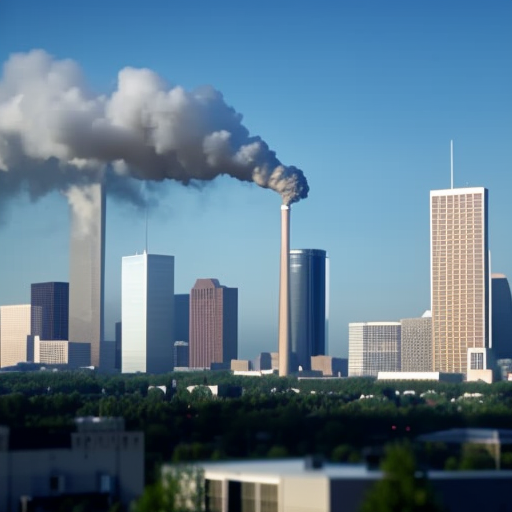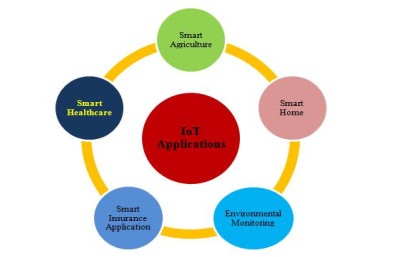
Air Quality in Houston’s Wayside Neighborhood

The Texas Commission on Environmental Quality (TCEQ) has recently conducted a study on air quality in Houston’s Wayside neighborhood, which is predominantly Latino and surrounded by industry. The study, conducted from July 2022 through June 2023, revealed that nearly 70% of the time, the air quality in this neighborhood exceeds the new federal regulations.
PM2.5 Study Findings
TCEQ Technical Specialist Erik Gribbin presented the findings of the PM2.5 study during a meeting with community members. PM2.5 refers to particulate matter smaller than a strand of human hair that can have adverse health effects. Houston was recently named the sixth worst city in the U.S. for PM2.5 pollution. The data collected in Wayside showed that the PM2.5 levels were 12.6 micrograms per cubic meter over the year period, which is 3.6 micrograms per cubic meter higher than the new annual standard set by the U.S. Environmental Protection Agency (EPA).
- 56% of the days exceeded the prior standard of 12 micrograms per cubic meter
- 68.3% of measured days had PM2.5 levels higher than 9 micrograms per cubic meter
Gribbin also mentioned that the data identified eight sources in the area as the largest contributors to PM2.5 pollution, although specific facilities could not be pinpointed.
Community Concerns
During the meeting, community members expressed their concerns about their health and the permitting process for polluting facilities. The TCEQ representatives clarified that they were not involved in the permitting divisions and could not provide answers regarding the permitting process. However, they mentioned that facilities applying for permits would need to adhere to the new EPA PM2.5 standards in their air modeling.
- Questions raised:
- How will permit renewals be processed?
- Will facilities known to pollute PM2.5 continue to be permitted?
Residents expressed frustration with the lack of answers and felt that their questions were not adequately addressed.
Monitoring Challenges and Future Plans
Houston has faced challenges in air monitoring, with monitors often being spread too far apart or located too far from emitters to accurately measure pollution. In response to this criticism, the TCEQ placed a monitor in Wayside in 2021. The TCEQ has plans to propose their initial attainment designations by February 2025, and preliminary designations by the EPA would be set in March 2026. The earliest that states would likely need to come into attainment is 2032, according to the EPA.
TCEQ Deputy Director Donna Huff acknowledged that control strategies are not yet defined and more actionable results are expected.
Conclusion
The study conducted by the TCEQ highlights the concerning air quality in Houston’s Wayside neighborhood. The findings indicate that the air quality exceeds the new federal regulations for PM2.5 pollution. Community members have expressed their health concerns and raised questions about the permitting process for polluting facilities. The TCEQ has acknowledged the challenges in air monitoring and plans to propose attainment designations in the coming years. However, there is a need for further action and control strategies to address the air pollution issue in Wayside.
SDGs, Targets, and Indicators
1. Which SDGs are addressed or connected to the issues highlighted in the article?
- SDG 3: Good Health and Well-being
- SDG 11: Sustainable Cities and Communities
- SDG 13: Climate Action
2. What specific targets under those SDGs can be identified based on the article’s content?
- SDG 3.9: By 2030, substantially reduce the number of deaths and illnesses from hazardous chemicals and air, water, and soil pollution and contamination.
- SDG 11.6: By 2030, reduce the adverse per capita environmental impact of cities, including by paying special attention to air quality and municipal and other waste management.
- SDG 13.2: Integrate climate change measures into national policies, strategies, and planning.
3. Are there any indicators mentioned or implied in the article that can be used to measure progress towards the identified targets?
- Indicator for SDG 3.9: Number of deaths and illnesses attributed to air pollution.
- Indicator for SDG 11.6: Ambient air pollution (measured by PM2.5 levels).
- Indicator for SDG 13.2: Adoption of national policies and plans that address climate change mitigation and adaptation.
Table: SDGs, Targets, and Indicators
| SDGs | Targets | Indicators |
|---|---|---|
| SDG 3: Good Health and Well-being | 3.9: By 2030, substantially reduce the number of deaths and illnesses from hazardous chemicals and air, water, and soil pollution and contamination. | Number of deaths and illnesses attributed to air pollution. |
| SDG 11: Sustainable Cities and Communities | 11.6: By 2030, reduce the adverse per capita environmental impact of cities, including by paying special attention to air quality and municipal and other waste management. | Ambient air pollution (measured by PM2.5 levels). |
| SDG 13: Climate Action | 13.2: Integrate climate change measures into national policies, strategies, and planning. | Adoption of national policies and plans that address climate change mitigation and adaptation. |
Behold! This splendid article springs forth from the wellspring of knowledge, shaped by a wondrous proprietary AI technology that delved into a vast ocean of data, illuminating the path towards the Sustainable Development Goals. Remember that all rights are reserved by SDG Investors LLC, empowering us to champion progress together.
Source: ehn.org

Join us, as fellow seekers of change, on a transformative journey at https://sdgtalks.ai/welcome, where you can become a member and actively contribute to shaping a brighter future.






